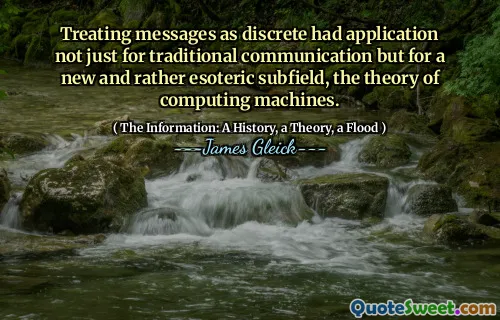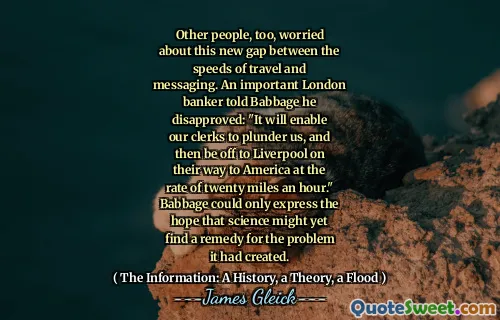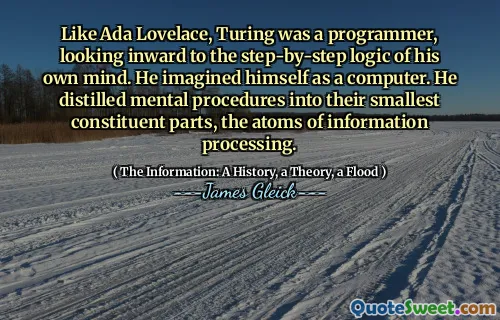
Treating messages as discrete had application not just for traditional communication but for a new and rather esoteric subfield, the theory of computing machines.
The quote emphasizes the profound shift in how information and messages are perceived within the realm of computing. Traditionally, communication was viewed as a continuous flow—like spoken language or analog signals—where the nuances of tone, pitch, and intonation carried meaning. However, the advent of digital technology introduced a paradigm where messages could be broken down into discrete, indivisible units—bits. This digital abstraction revolutionized not only communication but the entire foundation of computer science.
By conceptualizing messages as discrete entities, researchers could analyze, process, and manipulate information with unprecedented precision. This bit-based view became central to the development of computer architectures, programming languages, and data transmission protocols. It enabled the creation of error correction methods, efficient encoding schemes, and the standardization necessary for interoperability across diverse systems.
Furthermore, this idea extended beyond practical applications into theoretical computer science, giving rise to the formal study of automata, Turing machines, and computation theory. These esoteric subfields, once niche in academic circles, now underpin global digital infrastructure. The notion that each message can be segmented into discrete units also paved the way for concepts such as algorithms, data structures, and encryption.
In The Information, Gleick highlights this pivotal conceptual shift—how viewing information as discrete units was a critical step that bridged the physical aspects of hardware with the abstract processes of software. It underscores a fundamental change in understanding and manipulating information, transforming communication and computation into precise, programmable, and scalable systems. As our reliance on digital information deepens, the importance of these foundational ideas cannot be overstated, illustrating how a simple conceptual change led to the technological revolution we experience today.








